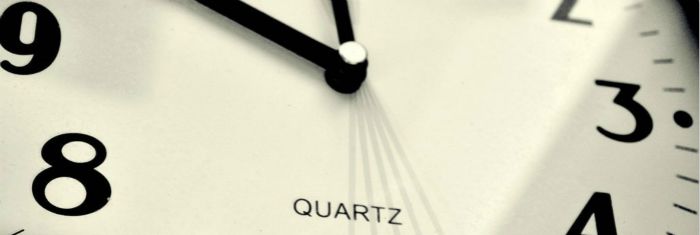科学新发现:我们的1秒钟将变长了!
|
We all know time is a construct, and right now, it's kept by the very precise tick of an international network of around 500 atomic clocks. 我们都知道时间是个复杂的概念。目前,世界上有一个由大约500台原子钟组成的网络,而我们就通过这些原子钟精确的滴答进行计时。 But now researchers have shown that time could be kept even more accurately with a new-generation of clocks called optical clocks, and they want to use the new system to redefine a second - which would mean we could squeeze even more into our days. The optical clock they've just measured is so precise that it would have lost less than two minutes if it had been running since the birth of the Universe, which is pretty incredible once you wrap your head around it. 但是现在研究人员表示,新一代钟表——光学钟——可以更准确地计时,而且他们想用新系统来重新定义一秒钟的长度,这也就意味着我们的日子里甚至可以挤进去更多光阴。刚刚测量的光学钟非常精确,如果它从宇宙诞生之日起开始运行的话,到现在误差还不到两分钟,仔细想想简直不可思议。 Global time-keeping is important, because 'the second' - as defined by the International System of Units (SI) - is what our GPS devices, electrical power grids, and financial networks all rely on. 全球计时是非常重要的,因为我们的GPS设备、电网和金融网络全都依赖着由国际计量系统(SI)定义的“秒”。 That's why we use atomic - or microwave - clocks, which measure the vibration of a caesium atom to keep time, just like the tiny swinging of a pendulum. And since 1967, a SI second has been defined as 9,192,631,770 cycles of those vibrations. But, as specific as that sounds, even the best atomic clocks can still accumulate an error of about 1 nanosecond over a month. 这也是我们应用原子钟或微波钟的原因,它们通过测量铯原子的摆动来计时,就像一个钟摆在轻微摆动。自1967年以来,国际计量系统定义的一秒就是91亿9263万1770次这种微小摆动。但是,尽管听起来很精准,即使是最好的原子钟在一个月的时间内也仍然会积累出十亿分之一秒的误差。 Optical clocks, on the other hand, are even more precise. They work similarly to atomic clocks, but they measure the oscillations of atoms or ions that vibrate at frequencies about 100,000 times higher than microwave frequencies - which is a whole lot faster, and therefore more accurate. 另一方面,光学钟却更为精确。它们的工作原理与原子钟相似,测量原子或离子的振动,但这些原子或离子的摆动频率大约是微波频率的10万倍左右——这要快得多,因此也更为准确。 "Our study is a milestone in terms of practical implementation of optical clocks," said one of the researchers, Christian Grebing, from the National Metrology Institute of Germany, "The message is that we could today implement these optical clocks into the time-keeping infrastructure that we have now, and we would gain." 德国国家计量研究所的一位研究人员克里斯蒂安·格雷宾说:“就光学钟的实际应用而言,我们的研究是一块里程碑。也就是说,今天我们可以把这些光学钟纳入目前拥有的计时基础设施之中,而且,我们会有所收获。” That gain is the ability to squeeze more into every second. Us slow humans wouldn't really notice, but things like financial time stamps would be more specific ,and banks would be able to complete even more transactions per second. 收获就是可以在每一秒之中挤入更多的时光。我们这些慢腾腾的人类不会真正注意到这点变化,但是金融时间戳之类的东西会更为精准,而银行甚至会在每秒钟完成更多的交易。 |









